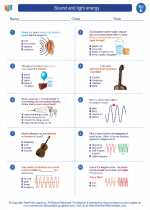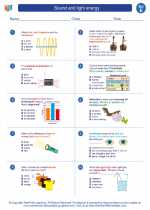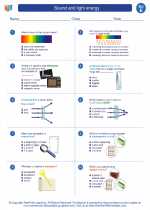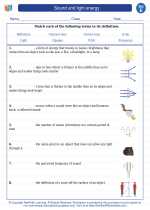Sound and light energy -> sensory organs
Sensory Organs
Our sensory organs are responsible for detecting external stimuli and transmitting this information to the brain. The main sensory organs include the eyes, ears, nose, tongue, and skin.
Eyes
The eyes are responsible for the sense of sight. They contain specialized cells called photoreceptors that detect light and convert it into electrical signals that are sent to the brain. The brain then processes these signals to form images and enable us to see the world around us.
Ears
The ears are responsible for the sense of hearing and balance. The outer ear collects sound waves and funnels them into the ear canal, where they cause the eardrum to vibrate. These vibrations are then transmitted to the inner ear, where tiny hair cells convert them into electrical signals that are sent to the brain. The inner ear also contains structures that help us maintain balance and sense our body's position in space.
Nose
The nose is responsible for the sense of smell. It contains specialized cells that detect airborne molecules and send signals to the brain, allowing us to perceive and distinguish different odors. The nose also plays a role in the sense of taste, as it helps us perceive flavors by contributing to the overall sensory experience of food and drink.
Tongue
The tongue is responsible for the sense of taste. It contains taste buds, which are clusters of cells that detect different flavors such as sweet, sour, salty, bitter, and umami. These taste buds send signals to the brain, allowing us to perceive and enjoy the flavors of various foods and beverages.
Skin
The skin is the largest sensory organ in the body and is responsible for the sense of touch. It contains a variety of receptors that detect different tactile sensations such as pressure, temperature, and pain. These receptors send signals to the brain, allowing us to perceive and respond to our physical environment through the sense of touch.
Study Guide
- What are the main sensory organs in the human body?
- Describe the function of the eyes and the specialized cells involved in the sense of sight.
- Explain how the ears are responsible for both hearing and balance, and how sound waves are converted into electrical signals.
- Discuss the role of the nose in the sense of smell and its contribution to the sense of taste.
- Detail the function of the tongue and the types of taste detected by taste buds.
- Examine the role of the skin as the primary organ for the sense of touch and the different tactile sensations it can detect.
Understanding the functions of our sensory organs is essential for comprehending how we perceive the world around us and interact with our environment. By studying the intricacies of these organs, we can gain a deeper appreciation for the complexities of human sensory perception.
.◂Science Worksheets and Study Guides Fifth Grade. Sound and light energy

 Activity Lesson
Activity Lesson
 Worksheet/Answer key
Worksheet/Answer key
 Worksheet/Answer key
Worksheet/Answer key
 Worksheet/Answer key
Worksheet/Answer key
 Worksheet/Answer key
Worksheet/Answer key
 Vocabulary/Answer key
Vocabulary/Answer key
 Vocabulary/Answer key
Vocabulary/Answer key
